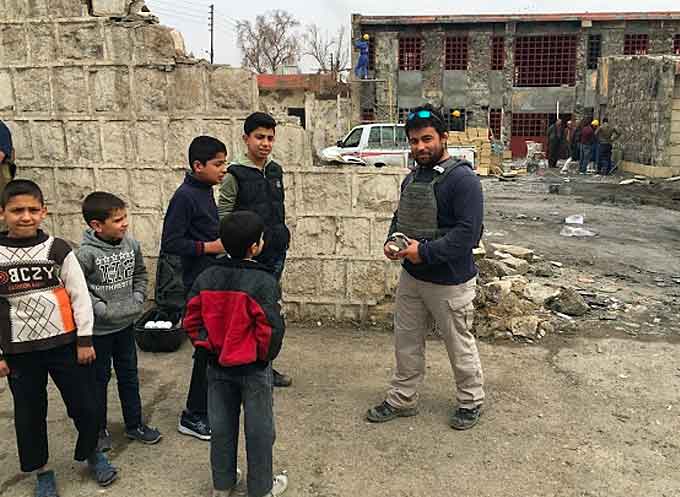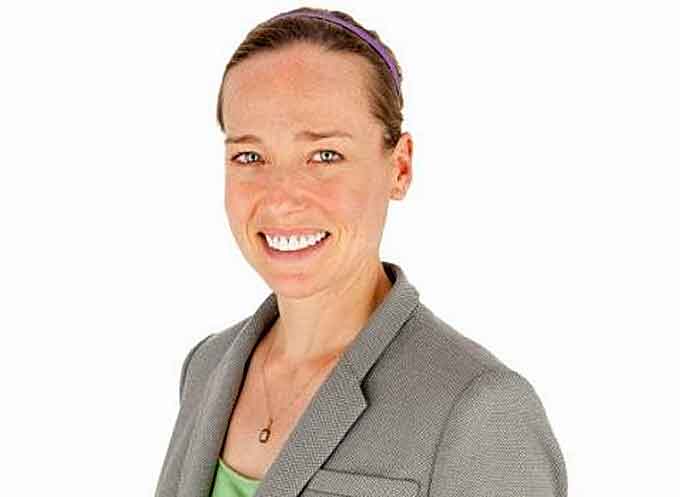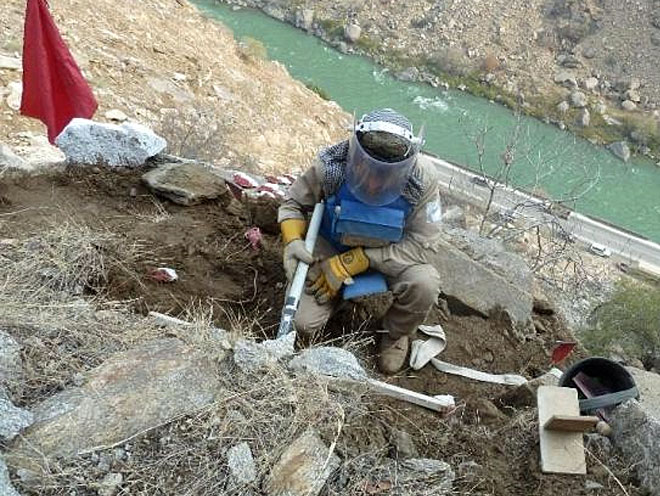
Iraqi children will be able to safely return to classes in two schools in Mosul, without fear of ISIS-placed explosive booby traps and improvised explosive devices (IEDs), due to the explosives detection and clearance work being conducted by Janus Global Operations for the U.S. State Department.
Janus Global is working on multiple critical clearance projects in the war-torn city of Mosul including schools such as the Al Muthana Boys School and Al-Mansour Boys School, both in the western section of the city.
At full operation, the schools serve nearly 1,000 students with more than 50 staff members, however, neither can resume full services until cleared of explosives and rebuilt.

“After ISIS captured Mosul, it terrorized people, corrupted education, and booby-trapped much of the city prior to its liberation in July 2017,” said Elizabeth Jordan Wilhelm, Janus Global director of operations.
“The Al Muthana Boys School, for example, is thought to be where ISIS kept explosives, and it was damaged in the fighting.”
“The rubble of destroyed buildings also containing potential explosive hazards surrounds the school.”
(Janus Global Operations clears a school in western Mosul, Iraq. February 2018. Case study completed. Courtesy of davenakasone and YouTube)
The U.S. State Department’s Bureau of Political and Military Affairs, Office of Weapons Removal and Abatement, assigned this critical project to Janus Global.
The Office of Weapons Removal and Abatement works to deliver programs and services aimed at reducing the harmful effects of at-risk, illicitly proliferated, and indiscriminately used conventional weapons of war.
Janus Global conducted a site survey of the schools and then began clearance work in January 2018.
Some 4,100 square meters and more than 700 tons of rubble were cleared at the two schools by Janus Global teams, which included uparmored heavy equipment, UAVs, and K-9 explosive-sniffing dogs.

The teams discovered explosive ordnance that included projectiles; mortar rounds; rockets; and hand grenades. They also found improvised fuses; small arms ammunition; IED-making equipment; and nearly 95 pounds of ordnance-related material.
The completion of the projects enabled the headmasters of both schools to seek funding from the Iraqi Department of Education to start rebuilding their schools.
“It’s uplifting to see the joy of the staff, students and parents at knowing it’s safe for the schools to fully resume,” Wilhelm said.

Mosul’s pre-ISIS occupation population was two million people, making it Iraq’s second largest city.
During the ISIS reign of terror, the number of residents in the city fell to 625,000. Eight months after ISIS was driven from the city, a half-million people have yet to return home.
The Christian Science Monitor, on March 7, 2017, published a story, headlined “Neglected under ISIS, schools in eastern Mosul overflow with students once again”, which describes the educational situation under Islamic State rule:
“Education was a key casualty of the occupation, which began in June 2014. Some residents describe threats to teach the new IS curriculum or be jailed; others talk of how they were forced to stay at home for years, drinking tea and nervously smoking as the world outside changed unrecognizably. Students – also often locked as safely as possible behind closed doors – slowly gave in to despair as opportunities disappeared.”
With ISIS gone and the explosives cleared, that despair has begun to change.
Clearance projects, like those sponsored by the U.S. State Department and conducted by Janus Global Operations, help to return normalcy to Mosul residents’ lives.
Janus Global has been clearing explosive devices in Mosul since July 20, 2017, less than two weeks after the city was declared liberated.
(Iraq may have ousted Islamic States militants from the city of Mosul over the summer, but the major task of finding and destroying the mines, booby traps and bombs remains. A security firm hired by the U.S. and Iraqi workers are making progress to clear major areas, but it could take years or even decades. Courtesy of PBS NewsHour and YouTube)
“Mosul is contaminated by thousands of explosive devices left by ISIS for the sole purpose of killing and injuring Iraqis and keeping them from returning to a normal life,” Wilhelm said.

















